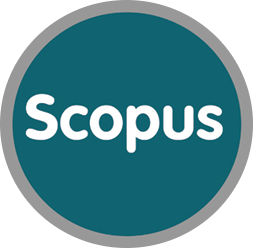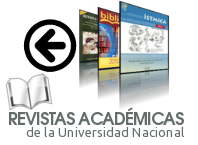Fidelidad al sitio y rango de hogar del caballito de mar narizón Hippocampus reidi (Teleostei: Syngnathidae) en la dársena de Varadero, noroeste de Cuba
DOI:
https://doi.org/10.15359/revmar.8-1.7Palabras clave:
Hippocampus reidi, caballito de mar narizón, fidelidad al sitio, rango de hogar, CubaResumen
En las últimas décadas se ha constatado un importante declive mundial en las poblaciones de peces de la familia Syngnathidae, entre las que se encuentran los carismáticos caballitos de mar. Hasta el momento en Cuba han sido escasas las investigaciones realizadas a las poblaciones de estos peces en su medio natural. El objetivo de este trabajo fue determinar la fidelidad al sitio y el rango de hogar del caballito de mar narizón (Hippocampus reidi Ginsburg, 1933), especie pobremente estudiada y clasificada en la categoría de Datos Deficientes (DD) por la UICN. Los muestreos se realizaron entre abril de 2009 y agosto de 2010 en dos estaciones localizadas en la dársena de Varadero, que es un canal artificial localizado al noroeste de Cuba. Se llevaron a cabo censos visuales en 17 transectos (20 x 1 m) en cada estación. Un total de 68 individuos fueron identificados y marcados con elastómeros fluorescentes. H. reidi mostró fidelidad al sitio, recapturándose el 48.5% de los ejemplares marcados muy cerca o en el mismo transecto donde fueron localizados y censados por primera vez. El rango de hogar fue de 70.6 ± 60.1 m (media ± desviación estándar) y no se encontraron diferencias significativas en esta variable entre ambas estaciones o entre las hembras y los machos. Estos resultados incrementan el conocimiento actual que se tiene acerca de esta especie de caballito de mar y demuestran la vulnerabilidad de sus poblaciones a las posibles perturbaciones de su restringido hábitat.
Referencias
Baum, J. K. & Vincent, A. C. J. (2005). Magnitude and inferred impacts of the seahorse trade in Latin America. Environ. Conserv., 32(4), 305-319. doi: 10.1017/S0376892905002481
Caldwell, I. & Vincent, A. J. (2013). A sedentary fish on the move: effects of displacement on long-snouted seahorse (Hippocampus guttulatus Cuvier) movement and habitat use. Environ. Biol. Fish., 96, 67-75. doi: 10.1007/s10641-012-0023-4
Chevalier, P. P., Cabrera, E., Caballero, H., Corrada, R. I., Fernández, A., Cobián, D. & García, A. (2014). Distribución, Abundancia y Relaciones Ecológicas del Pez León (Pterois volitans/miles: Scorpaenidae) en Cuba. GCFI, 66, 178-179.
CITES. (2004). Convención sobre el Comercio Internacional de Especies Amenazadas de Fauna y Flora Silvestres. Recuperado en agosto 29, 2015, disponible en http://www.cites.org/
Curtis, J. (2006). Visible implant elastomer color determination, tag visibility, and tag loss: Potential sources of error for marks-recapture studies. N. Am. J. Fish. Manag., 26, 327-337. doi: 10.1577/M05-099.1
Curtis, J. M. & Vincent, A. C. (2006). Life history of an unusual marine fish: survival, growth and movement patterns of Hippocampus guttulatus Cuvier 1829. J. Fish Biol., 68, 707-733. doi: 10.1111/j.0022-1112.2006.00952.x
Dauwe, B. (1993). Ecology of the Seahorse H. reidi (Syngnathidae) on Coral Reef of Bonaire (N. A.): Habitat, Reproduction and Community Interactions. Tesis de doctorado no publicada, Rijksuniversiteit Groningen, Groningen, Holanda.
Doupé, R. G., Partridge, G. J. & Lymbery, A. J. (2003). Visible implant fluorescent elastomer tags as pedigree markers for applied aquaculture: an evaluation using black bream Acanthopagrus butcheri. Aquac. Res., 34(8), 681-683. doi: 10.1046/j.1365-2109.2003.00860.x
Felício, A. K. C., Rosa, I. L., Souto, A. & Freitas, R. H. A. (2006). Feeding behavior of the longsnout seahorse Hippocampus reidi Ginsburg, 1933. J. Ethol., 24, 219-225. doi: 10.1007/s10164-005-0189-8
Flynn, A. J. & Ritz, D. A. (1999). Effect of habitat complexity and predatory style on the capture success of fish feeding on aggregated prey. J. Mar. Biol. Assoc. UK, 79, 487-494. doi: 10.1017/S0025315498000617
Foster, S. J. & Vincent, A. C. (2004). Life history and ecology of seahorses: implications for conservation and management. J. Fish Biol., 65, 1-61. doi: 10.1111/j.0022-1112.2004.00429.x
Freret-Meurer, N. V. & Andreata, J. V. (2008). Field Studies of a Brazilian Seahorse Population, Hippocampus reidi Ginsburg, 1933. Braz. Arch. Biol. Technol., 51(4), 743-751. doi: 10.1590/S1516-89132008000400012
Giles, B. G., Ky, T. S., Hoang, D. H. & Vincent, A. C. (2005). The catch and trade of seahorses in Vietnam. Biod. Conserv., 15, 2497-2513. doi: 10.1007/s10531-005-2432-6
Griffiths, S. P. (2002). Retention of visible implant tags in small rockpool fishes. Mar. Ecol. Prog. Ser., 236, 307-309. doi: 10.3354/meps236307
Harasti, D., Glasby, T. M. & Martin-Smith, K. M. (2010). Striking a balance between retaining populations of protected seahorses and maintaining swimming nets. Aquat. Conserv., 20, 159-166. doi: 10.1002/aqc.1066
Harasti, D., Gladstone, W. & Martin Smith, K. M. (2014). Ontogenetic and sex-based differences in habitat preferences and site fidelity of the White’s seahorse Hippocampus
whitei. J. Fish Biol., 85, 1413-1428. doi: 10.1111/jfb.12492
Harasti, D., Martin-Smith, K. & Gladstone, W. (2012). Population dynamics and life history of a geographically restricted seahorse, Hippocampus whitei. J. Fish Biol., 81, 1297-1314. doi: 10.1111/j.1095-8649.2012.03406.x
Hellyer, C. B., Harasti, D. & Poore, A. G. B. (2011). Manipulating artificial habitats to benefit seahorses in SydneyHarbour. Aquat. Conserv., 21, 582-589. doi: 10.1002/aqc.1217
Josephson, D., Robinson, J. M., Weidel, B. C. & Kraft, C. E. (2008). Long-Term Retention and Visibility of Visible Implant Elastomer Tags in Brook Trout. N. Am. J. Fish. Manag., 28, 1758-1761. doi: 10.1577/M08-019.1
Kleiber, D., Blight, L. K., Caldwell, I. R. & Vincent, A. C. J. (2011). The importance of seahorses and pipefishes in the diet of marine animals. Rev. Fish Biol. Fisher., 21, 205-223. doi: 10.1007/s11160-010-9167-5
Kuiter, R. H. (2009). Seahorses and their relatives. Seaford, Australia: Aquatic Photographics.
Lourie, S. A., Foster, S. J., Cooper, E. W. T. & Vincent, A. C. J. (2004). A Guide to the Identification of Seahorses. Washington, D.C., EE. UU.: University of British Columbia and World Wildlife Fund.
Mai, A. C. G. & Rosa, I. M. L. (2009). Aspectos ecológicos do cavalo-marinho Hippocampus reidi no estuário Camurupim/Cardoso, Piauí, Brasil, fornecendo subsídios para a criação de uma Área de Proteção Integral. Biota Neotrop., 9(3), 85-91. doi: 10.1590/S1676-06032009000300007
Malone, J. C., Forrester, G. E & Steele, M. A. (1999). Effects of subcutaneous microtags on the growth, survival, and vulnerability to predation of small reef fishes. J. Exp. Mar. Biol. Ecol., 237, 243-253. doi: 10.1016/S0022-0981(99)00003-9
Martin-Smith, K. M. & Vincent, A. C. (2005). Seahorse declines in the Derwent estuary, Tasmania in the absence of fishing pressure. Biol. Conserv., 123, 533-545. doi: 10.1016/j.biocon.2005.01.003
Moreau, M. A. & Vincent, A. C. (2004). Social structure and space use in a wild population of the Australian short-headed seahorse Hippocampus breviceps Peters, 1869. Mar. Freshwater Res., 55, 231-239. doi: 10.1071/MF03159
Olsen, E. M. & Vøllestad, L. A. (2001). An evaluation of visible implant elastomer for marking age-0 brown trout. N. Am. J. Fish. Manag., 21, 967-970. doi: 10.1577/1548-8675(2001)021<0967:AEOVIE>2.0.CO;2
Pastor, L., Piloto, Y., Corrada, R. I. & Chevalier, P. P. (2011). Estudio de las poblaciones de caballitos de mar en dos zonas de la costa norte de La Habana y Pinar del Río, Cuba. Rev. Mar. Cost., 3, 171-181.
Perante, N., Pajaro, M., Meeuwig, J. & Vincent, A. (2002). Biology of a seahorse species, Hippocampus comes in the central Philippines. J. Fish Biol., 60, 821-837. doi: 10.1111/j.1095-8649.2002.tb02412.x
Rosa, I. L., Dias, T. L. & Baum, J. K. (2002). Threatened fishes of the world: Hippocampus reidi Ginsburg, 1933 (Syngnathidae). Environ. Biol. Fish., 64, 378. doi: 10.1023/A:1016152528847
Rosa, I. L., Oliveira, T. P. R., Castro, A. L. C., Moraes, L., Xavier, J. H. A., Nottingham, M. C., … & Monteiro-Neto, C. (2007). Population characteristics, space use and habitat associations of the seahorse Hippocampus reidi (Teleostei: Syngnathidae). Neotrop. Ichthyol., 5, 405-414. doi: 10.1590/S1679-62252007000300020
Sánchez-Camara, J. & Booth, D. J. (2004). Movement, home range and site fidelity of the weedy seadragon Phyllopteryx taeniolatus (Teleostei: Syngnathidae). Environ. Biol. Fish., 70, 31-41. doi: 10.1023/B:EBFI.0000022850.33643.e3
Sánchez-Camara, J., Booth, D. J., Murdoch, E. J., Watts, D. & Turon, X. (2006). Density, habitat use and behaviour of the weedy seadragon Phyllopteryx taeniolatus (Teleostei: Syngnathidae) around Sydney, New SouthWales, Australia. Mar. Freshwater Res., 57, 737-745. doi: 10.1071/MF05220
Sogabe, A. & Yanagisawa, Y. (2007). Sex-role reversal of a monogamous pipefish without higher potential reproductive rate in females. Proc. Biol. Sci., 274(1628), 2959-2963. doi: 10.1098/rspb.2007.1041
StatSoft, Inc. (2007). STATISTICA (data analysis software system), version 8. www.statsoft.com. Tulsa, OK: StatSoft, Inc.
UICN. (2015). Red List of Threatened Species. Recuperado en septiembre 1, 2015, disponible en http://www.iucnredlist.org/
Vari, R. P. (1982). The seahorses (Subfamily Hippocampinae). In J. M. Böhlke, D. M. Cohen, B. B. Collette, W. N. Eschmeyer, R. H. Gibbs-Jr, T. W. Pietsch, W. J. Richards, C. L. Smith & K. S. Thomson (Eds.), Fishes of the Western North Atlantic, Part 8. Order Gasterosteiformes, Suborder Syngnathoidea. Syngnathidae (Doryrhamphinae, Syngnathidae, Hippocampinae) (pp. 173-189). New Haven, EE. UU.: Sears Foundation for Marine Research.
Vincent, A. C., Marsden, A. D., Evans, K. L. & Sadler, L. M. (2004). Temporal and spatial opportunities for polygamy in a monogamous seahorse, Hippocampus whitei. Behaviour, 141, 141-156. doi: 10.1163/156853904322890780
Vincent, A. C. J., Evans, K. L. & Marsden, A. D. (2005). Home range behaviour of the monogamous Australian seahorse, Hippocampus whitei. Environ. Biol. Fish., 72, 1-12. doi: 10.1007/s10641-004-4192-7
Vincent, A. C. & Sadler, L. M. (1995). Faithful pair bonds in wild seahorses, Hippocampus whitei. Anim. Behav., 50, 1557-1569. doi: 10.1016/0003-3472(95)80011-5
Woods, C. & Martin-Smith, K. M. (2004). Visible implant fluorescent elastomer tagging of the big-bellied seahorse, Hippocampus abdominalis. Fish. Res., 66, 363-371. doi: 10.1016/S0165-7836(03)00183-8
Publicado
Cómo citar
Número
Sección
Licencia
Condiciones generales

Revista Ciencias Marinas y Costeras por Universidad Nacional se encuentra bajo una Licencia Creative Commons Atribución-NoComercial-SinDerivadas 3.0 Costa Rica.
La revista se aloja en repositorios de acceso abierto como el Repositorio Institucional de la Universidad Nacional, el Repositorio Kimuk de Costa Rica y la Referencia.
La fuente editorial de la revista debe reconocerse. Para ello utilice el identificador doi de la publicación.
Política de autoarchivo: La revista permite el auto archivo de los artículos en su versión arbitrada, editada y aprobada por el Consejo Editorial de la Revista para que sean disponibles en Acceso Abierto a través de Internet. Más información en el siguiente link: https://v2.sherpa.ac.uk/id/publication/28915






 Los artículos de la Revista Ciencias Marinas y Costeras se encuentra bajo la
Los artículos de la Revista Ciencias Marinas y Costeras se encuentra bajo la 
